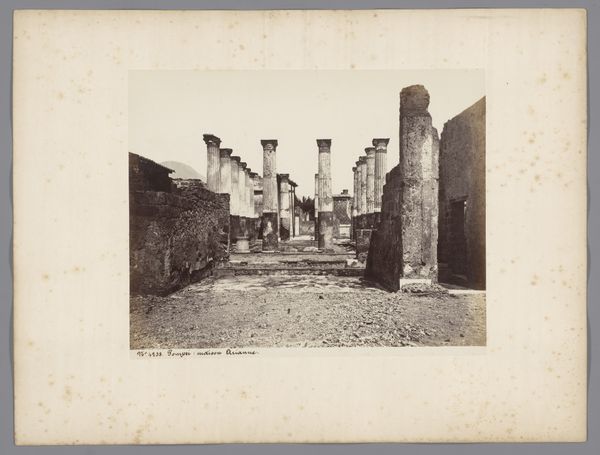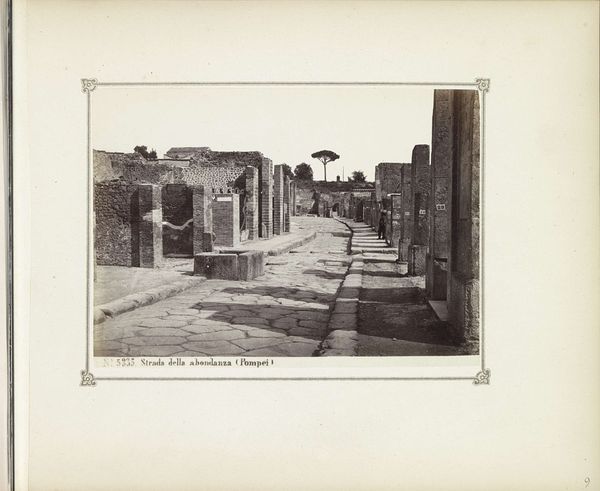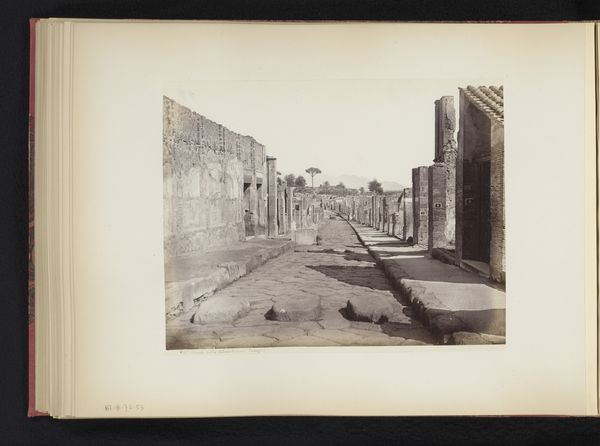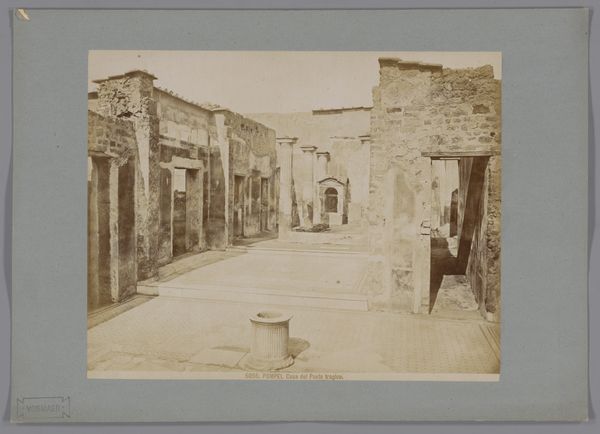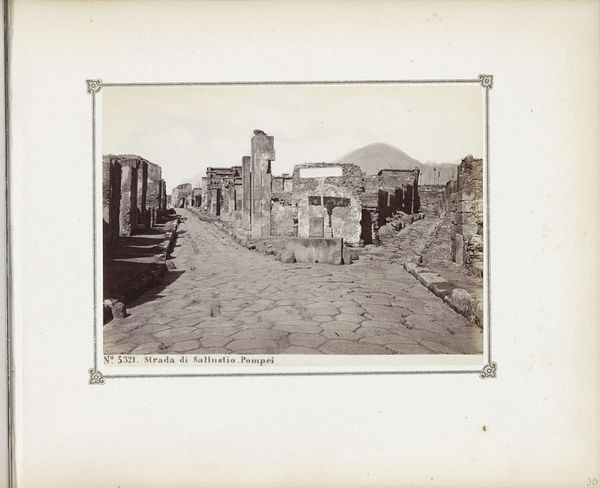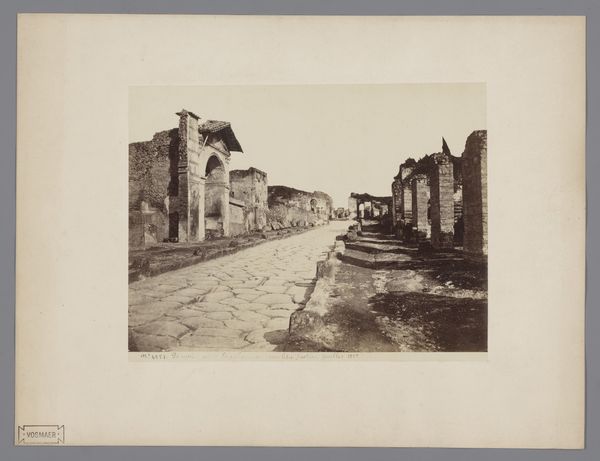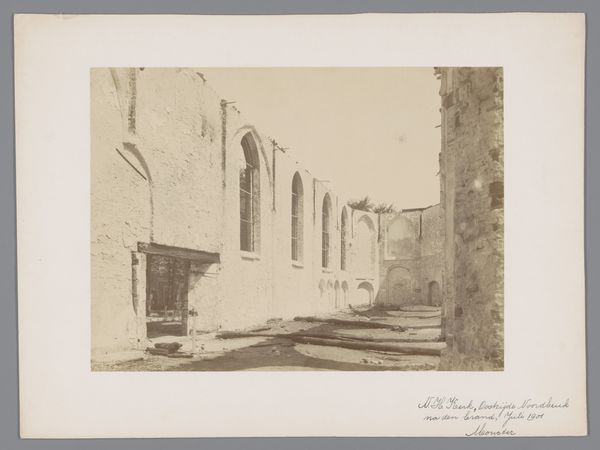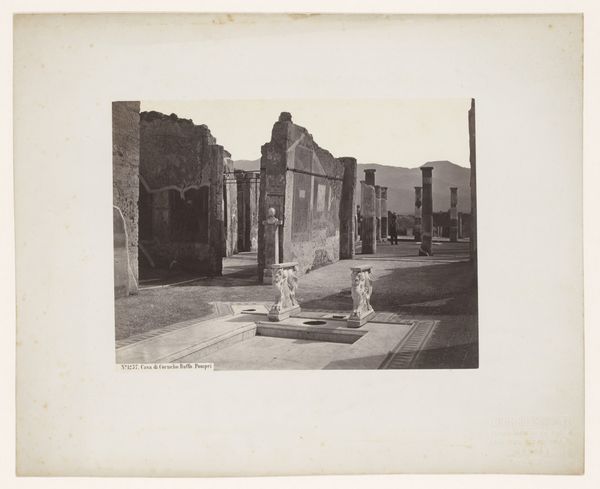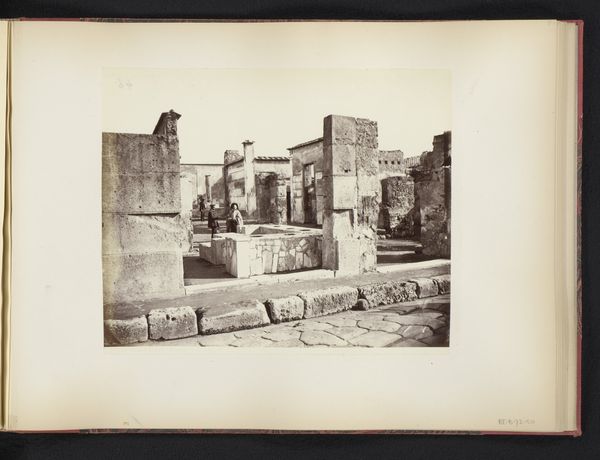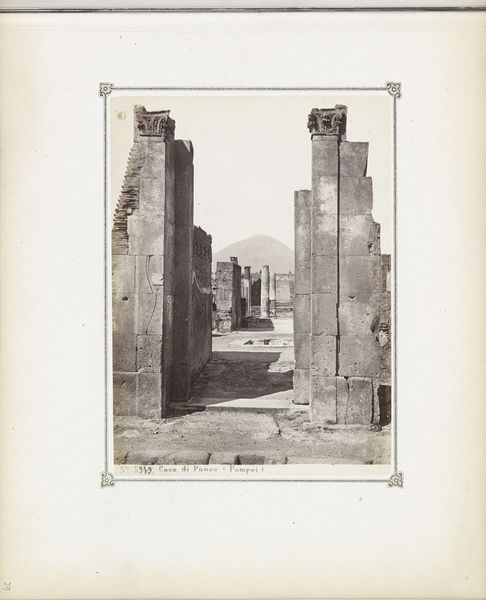
photography, gelatin-silver-print
#
landscape
#
photography
#
ancient-mediterranean
#
gelatin-silver-print
Dimensions: height 154 mm, width 107 mm, height 207 mm, width 164 mm
Copyright: Rijks Museum: Open Domain
Editor: So, here we have Giorgio Sommer's photograph, "Restanten van het huis van Sallustio te Pompeï," a gelatin silver print dating from 1857 to 1914, currently held in the Rijksmuseum. What strikes me is the raw texture of the ruins; you can almost feel the age and decay. What's your take? Curator: I am interested in how Sommer used the relatively new medium of photography to document these ruins. Photography allowed for the mass reproduction of these images and consequently, fueled a growing market for tourism. So the image isn't just of the house, but a commodity produced by an economy seeking to exploit and consume its history. Editor: That’s interesting! I hadn't thought about photography as a commodity itself at that time. Does the printing process of gelatin-silver play into this at all? Curator: Absolutely! Gelatin-silver prints are significant. They enabled sharper, more detailed images than earlier photographic processes. This technology fueled both archaeological documentation and the widespread distribution of Pompeii's ruins to a public fascinated by antiquity, turning history into an easily consumed product. Editor: So the specific materials of this photograph – the gelatin-silver print itself – played a key role in democratizing, or maybe even commodifying, access to the ancient world. It's almost as if the print, the material object, holds as much meaning as what's depicted. Curator: Exactly! Think about the labor involved in excavating the site, transporting the materials, and even in the darkroom producing these prints. Every step speaks to systems of labor and consumption that extend beyond the aesthetics of classical ruins. What do you think is left to discover? Editor: Considering that aspect adds a whole new layer to viewing the piece! The history in this photo goes so far beyond the image captured and what the ruins show by incorporating all of these other influences.
Comments
No comments
Be the first to comment and join the conversation on the ultimate creative platform.
